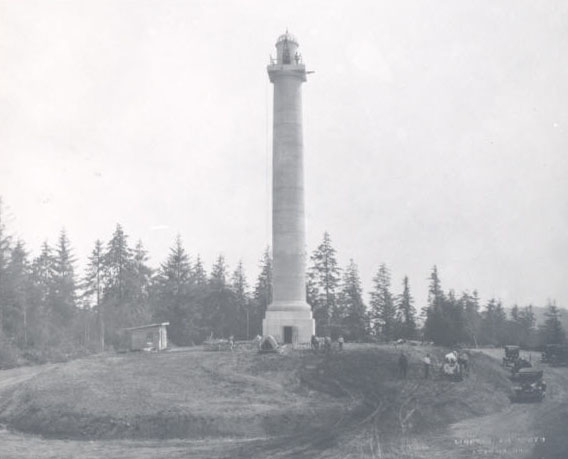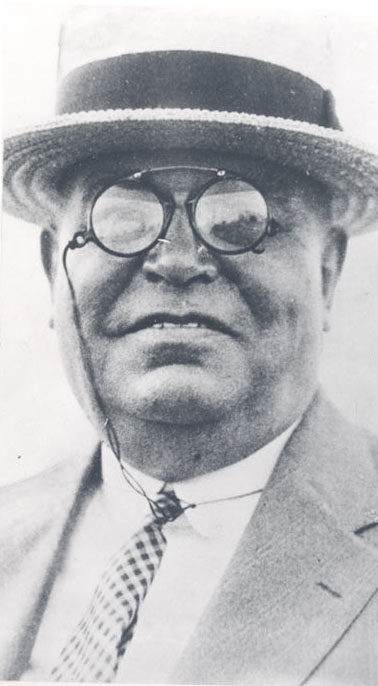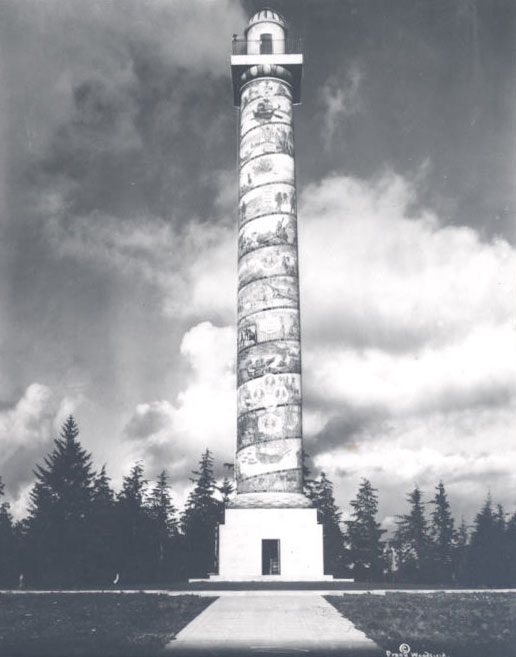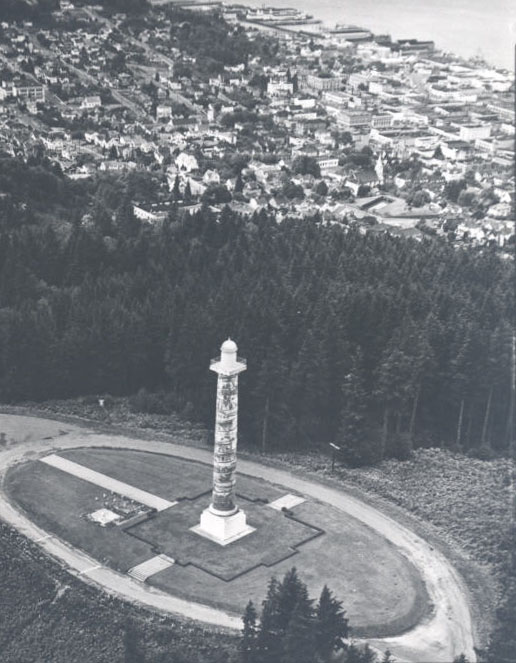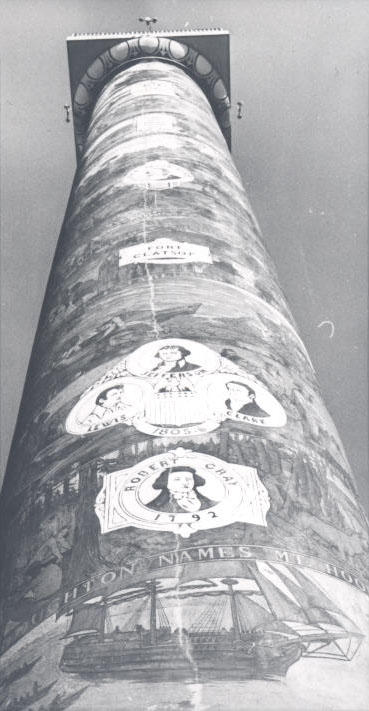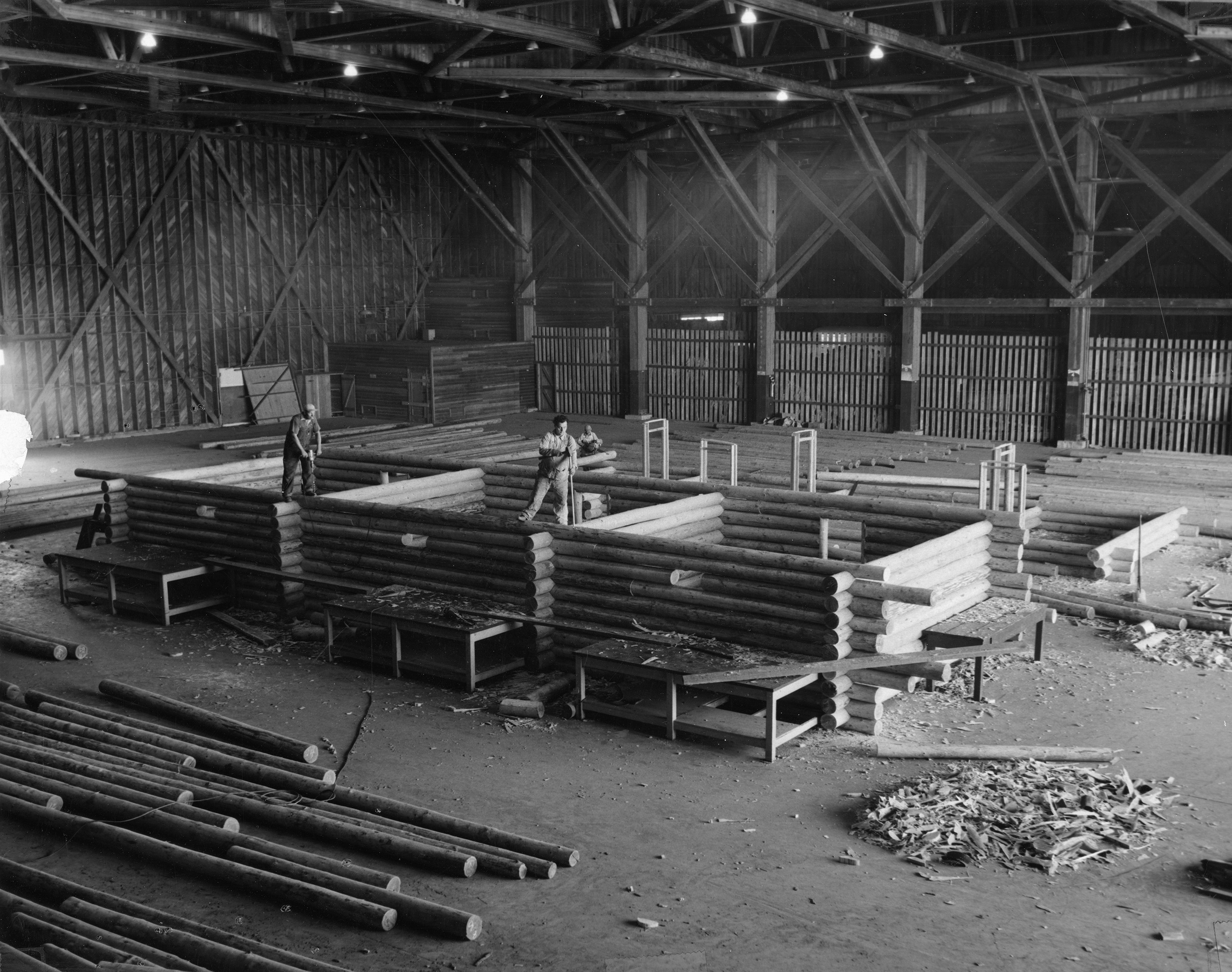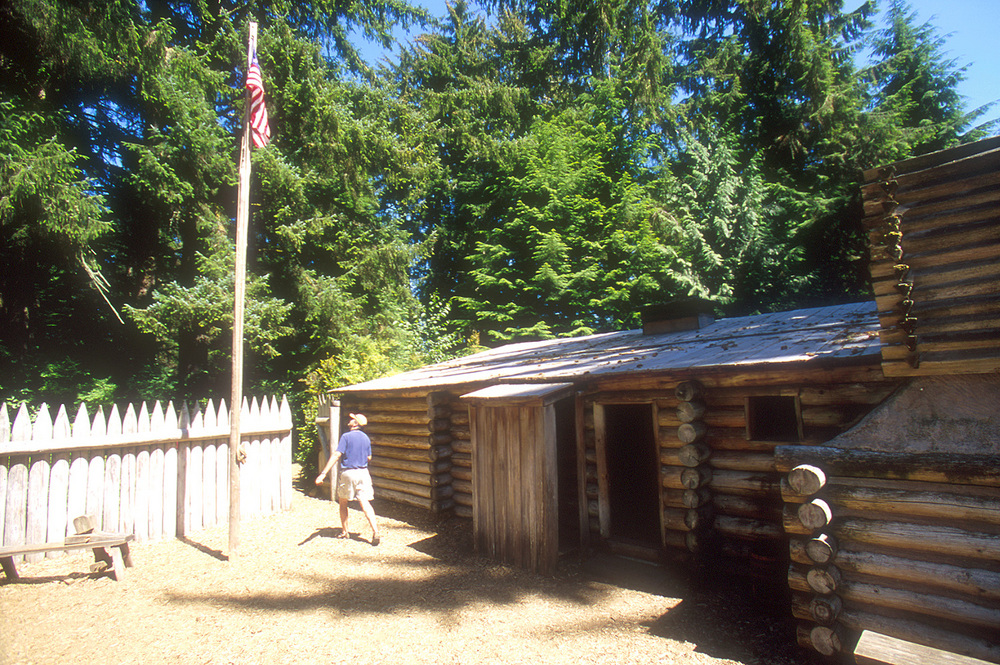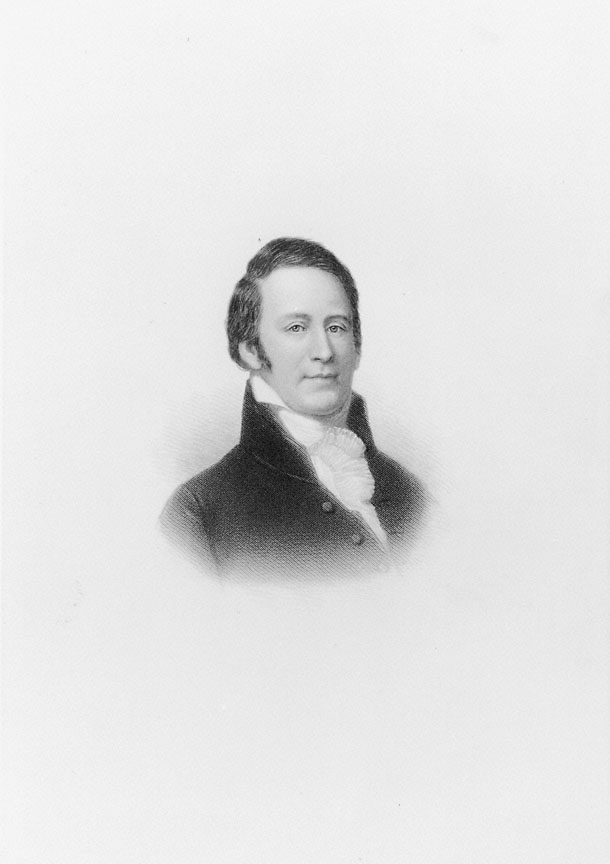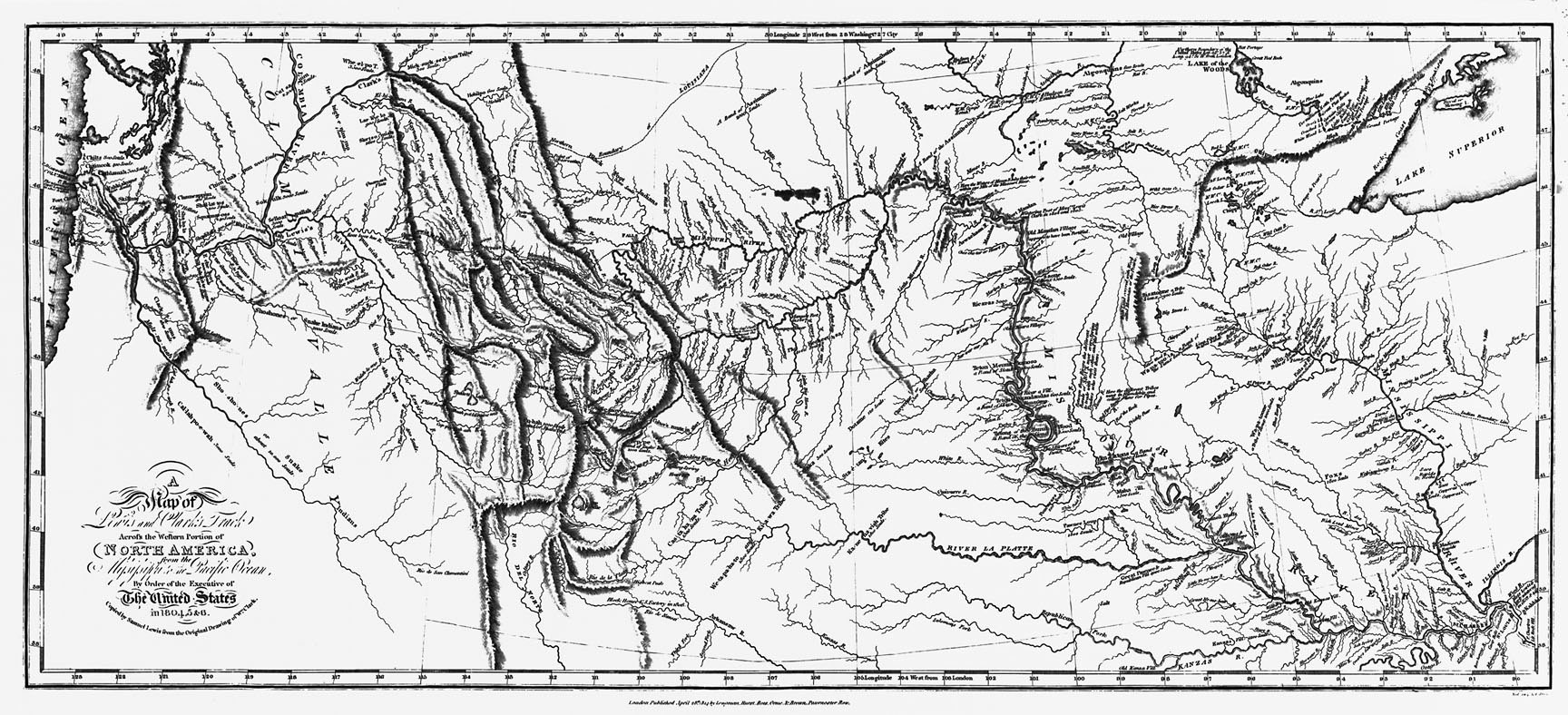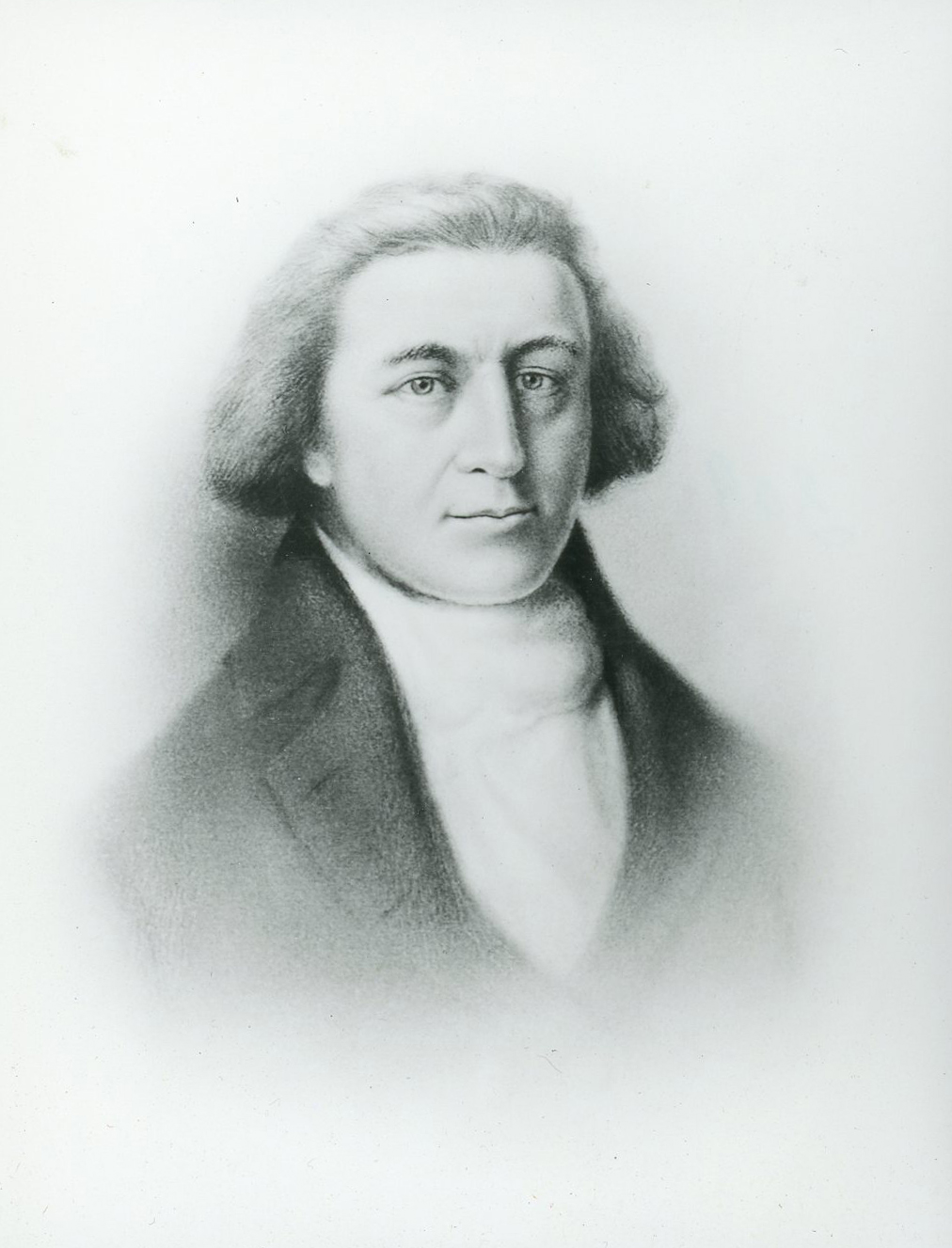The Astoria Column is an art-covered pillar made of concrete that reaches 125 feet skyward from Coxcomb Hill, overlooking Astoria and the Columbia River. Its observation platform offers a panoramic view for the many visitors who climb the 164 steps of its winding staircase. At its dedication on July 22, 1926, the Astoria Column was described as the “greatest of western monuments.” Over the years, the Column has become an Oregon icon and a source of identity and pride for Astorians. It was listed on the National Register for Historic Places in 1974.
As many as 400,000 people visited the Astoria Column in each of the years leading up to the bicentennial of the Lewis and Clark Expedition in 2005-2006, but the Column is far more than a tourist attraction and a scenic vantage point. As a work of art, it is the world’s only large-scale pictorial frieze in sgraffito (skra-fe-to), an Old World art form that involves cutting outlines through a wet plaster layer to reveal a dark base coat. The Column also depicts some of the events of American exploration and development of the Northwest. It is the crowning monument in a series of historical markers that followed the route of the Great Northern Railroad.
The architect of the Astoria Column, New Yorker Electus D. Litchfield, and its benefactors were intent on capturing the history of the lower Columbia River. They particularly wanted to honor Captain Robert Gray, who in 1792 was the first EuroAmerican to enter the mouth of the Columbia; explorers Meriwether Lewis and William Clark, who in December 1805 established Fort Clatsop; and John Jacob Astor of New York, the town’s namesake.
For three centuries, Spain, England, France, and Russia competed to lay claim to land that ultimately became the greater Pacific Northwest—Oregon, Washington, Idaho and parts of Montana and Wyoming. The United States successfully negotiated for the land in part by arguing that the U.S. government had made the most thorough exploration and settlement of the region: Captain Gray had explored the area by water; Lewis and Clark had explored it over land; and John Astor had launched commerce at Fort Astoria.
These three accomplishments were declared to be “the trinity of epochal historical events which influenced the retention of the ‘Oregon Country’ as a part of the United States,” according to the program from the 1926 Astoria Founders Celebration. The spiraling frieze on the Astoria Column tells this story, rendered by master Italian immigrant artist Attilio Pusterla. The pictoral story begins with the Clatsop and Chinook Indians and ends with the arrival of the railroad in 1893.
Ralph Budd, president of the Great Northern Railroad, first proposed the Astoria Column in 1925, “to properly salute Astoria’s explorers and early settlers for their critical role in the expansion of the United States to the Pacific Coast.” Astor’s great grandson, Vincent Astor, donated $20,000 of the $27,133.96 cost of the Column. Architect Litchfield gave $200, and the Great Northern paid the balance and provided project management. The City of Astoria cleared the site and built a road. The Column was dedicated during the three-day Astoria Founders Celebration in 1926. Among the thousands attending the event was Mrs. Richard Aldrich of New York, a descendent of John Jacob Astor.
It soon became clear that sgraffito was an artistic technique better suited to the Mediterranean than to rain-lashed Coxcomb Hill. The artwork began to deteriorate and had to be repaired beginning in 1936, as funds and expertise were available. Friends of Astoria Column Inc. was founded in 1988 to broaden public interest and to save the deteriorating Column. The Friends was led by Jordan D. Schnitzer, a Portland philanthropist and businessman whose grandfather’s scrap business route had included Astoria. “Beyond raising money,” the Astorian newspaper reported, “the Friends’ most significant contribution was bringing world-class antiquities experts here to devise a way to restore the Column’s frescoes.”
By the time of the restoration, only about 20 percent of the sgraffito remained. Frank Preusser, the senior conservation specialist for the J. Paul Getty Museum, led the effort, which cost more than a million dollars. The restored Astoria Column was unveiled on November 19, 1995. The pillar has been treated with a siloxane-based water repellant to protect it against future weather damage.
As part of the 2005 Lewis and Clark Bicentennial, the city and the Friends of Astoria Column raised nearly $2 million to improve the grounds around the Column. The spiral stairway was replaced in 2009.
-
![Astoria Column, construction,1926]()
Astoria Column, construction, 1926.
Astoria Column, construction,1926 Courtesy Oreg. Hist. Soc. Research Lib., neg. no.015388
-
![Attilio Pusterla, artist]()
Attilio Pusterla, artist.
Attilio Pusterla, artist Courtesy Oreg. Hist. Soc. Research Lib., neg. no.014316
-
![Astoria Column, 1930]()
Astoria Column, 1930.
Astoria Column, 1930 Courtesy Oreg. Hist. Soc. Research Lib., neg. no.000482
-
![Astoria Column overlooking Astoria, 1947]()
Astoria Column overlooking Astoria, 1947.
Astoria Column overlooking Astoria, 1947 Courtesy Oreg. Hist. Soc. Research Lib., neg. no.000481
-
![Mural, 1961]()
Mural, 1961.
Mural, 1961 Courtesy Oreg. Hist. Soc. Research Lib., neg. no.00480
Related Entries
-
![Fort Clatsop]()
Fort Clatsop
Built in 1805 near present-day Astoria, Fort Clatsop was the winter qua…
-
![Lewis and Clark Bicentennial]()
Lewis and Clark Bicentennial
At least ten years before 2004, the 200th anniversary of Meriwether Lew…
-
![Lewis and Clark Expedition]()
Lewis and Clark Expedition
The Expedition No exploration of the Oregon Country has greater histor…
-
![Meriwether Lewis (1774-1809)]()
Meriwether Lewis (1774-1809)
Reflecting on Meriwether Lewis after his death, Thomas Jefferson bemoan…
-
![Robert Gray (1755–1806)]()
Robert Gray (1755–1806)
On May 11, 1792, Robert Gray, the first American to circumnavigate the …
-
![William Clark (1770-1838)]()
William Clark (1770-1838)
William Clark is indelibly connected to Oregon in many ways, some obvio…
Map This on the Oregon History WayFinder
The Oregon History Wayfinder is an interactive map that identifies significant places, people, and events in Oregon history.
Further Reading
Beckham, Stephen Dow. Astoria Column: Landmark of the Pacific Crossroads. Astoria: Friends of Astoria Column, 2004.
Fransen, Joean K. “The Astoria Column: The history of the memorial on Coxcomb Hill.” Cumtux 16.4 (Fall 1996): 11-15.
Kimbrell, Leonard B. “Some New Light on the Astoria Column.” In Festschrift, a collection of essays on architectural history, edited by Elisabeth Walton. Eugene, Ore.: Northern Pacific Coast Chapter Society of Architectural Historians, 1978.



